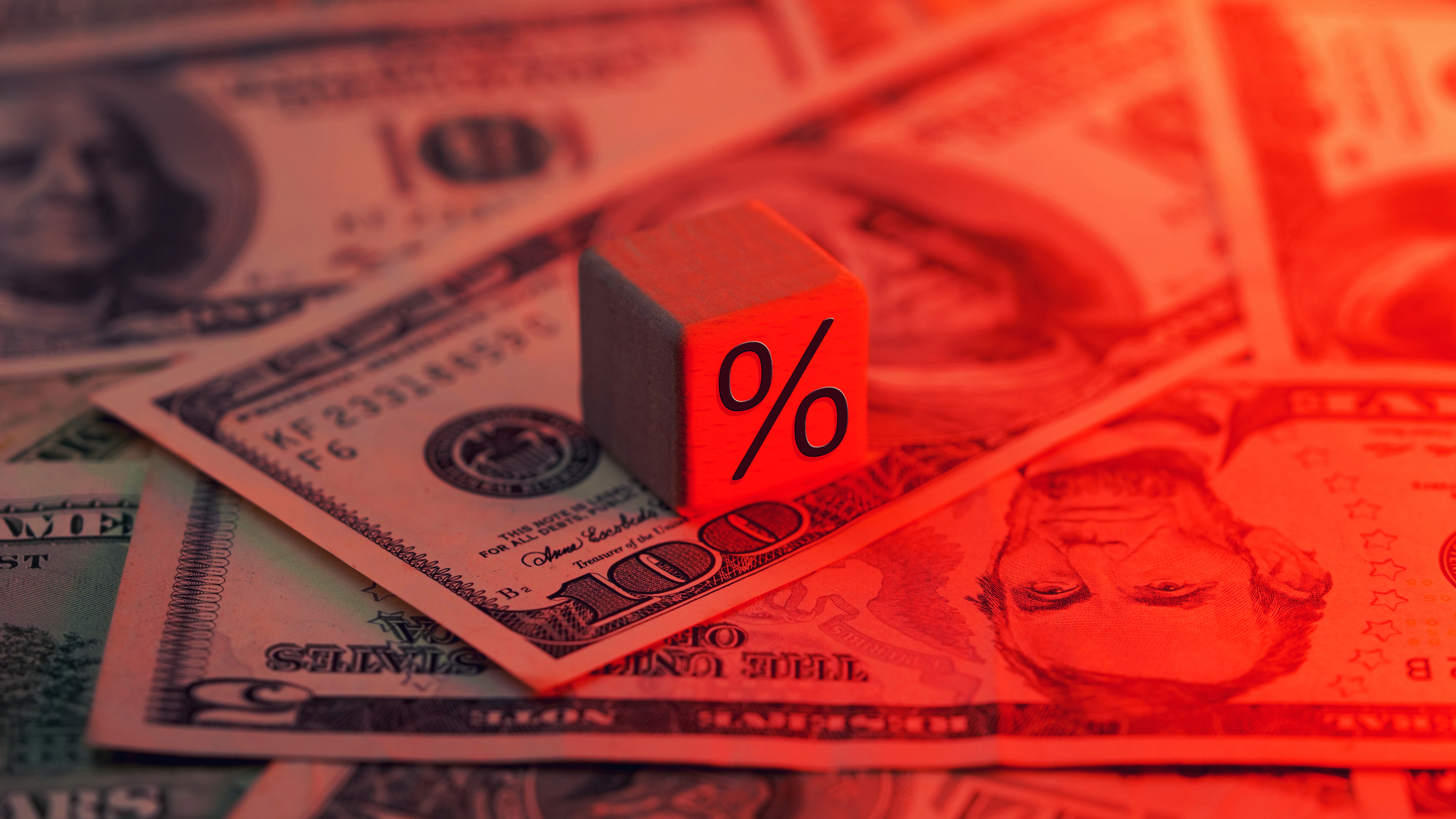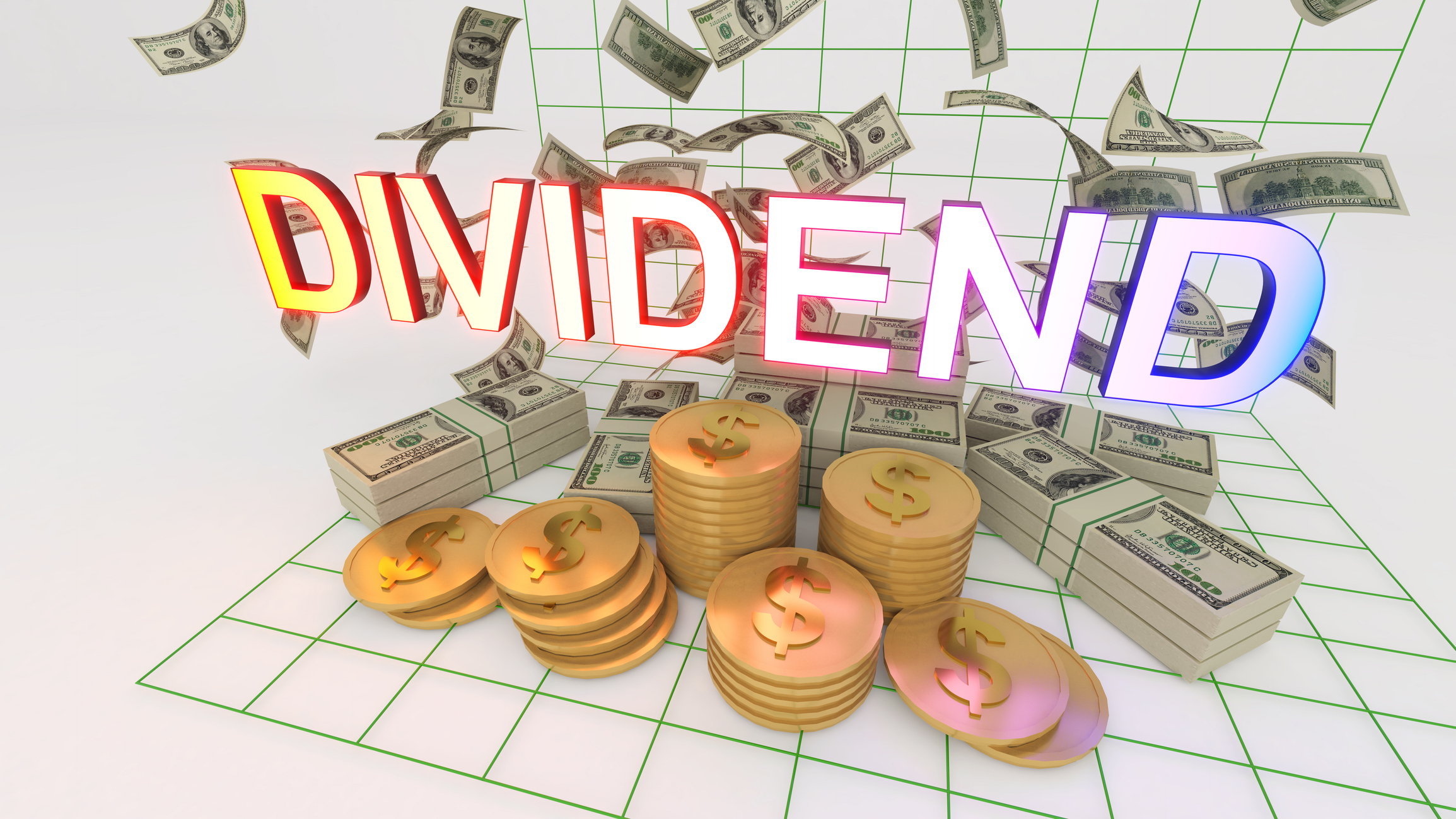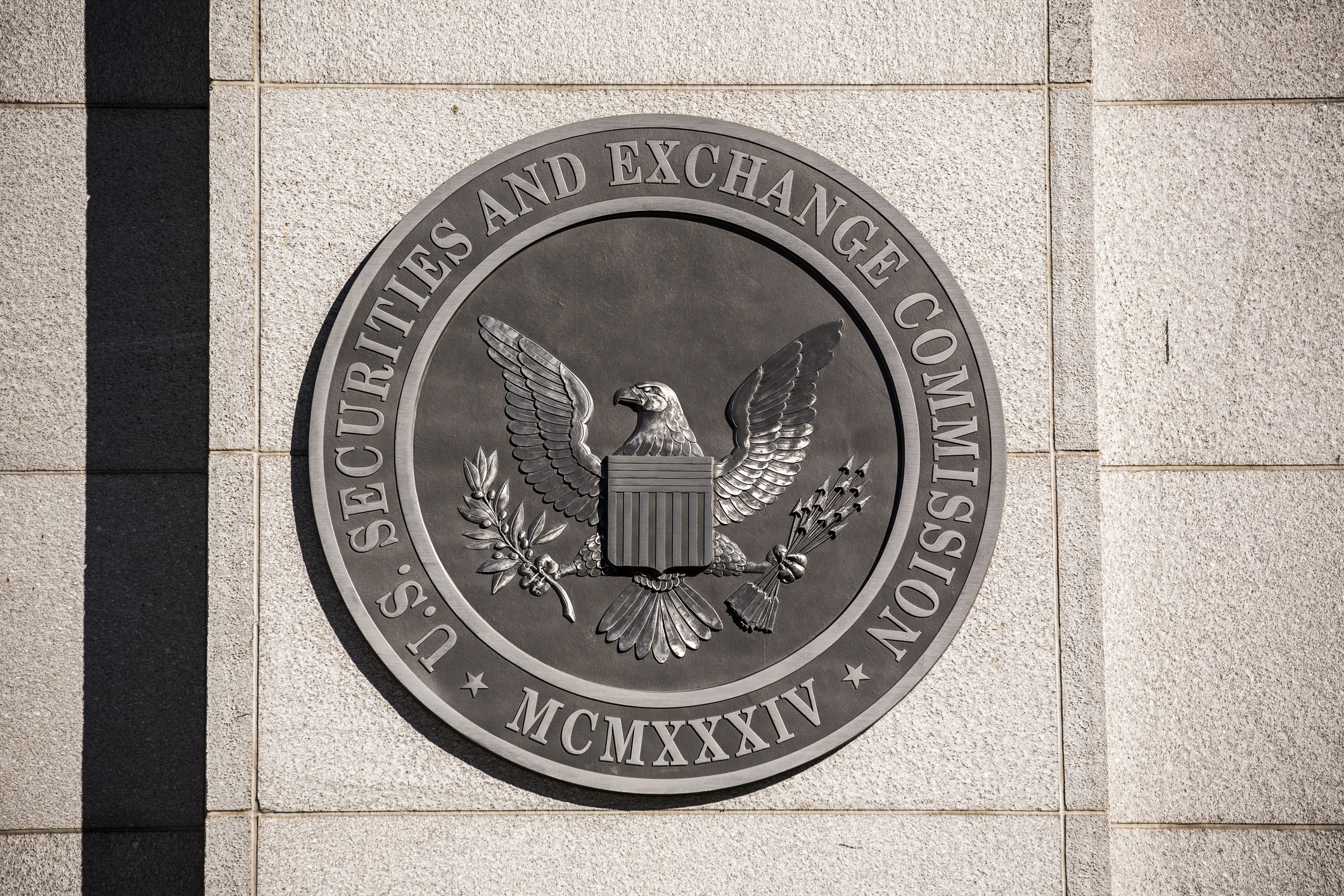Should You Buy These ETFs Before the Fed Cuts Rates?
The Fed is expected to cut the federal funds rate at the December Fed meeting, and investors should consider these ETFs as interest rates head lower.


The first half of 2025 was spent waiting for the Federal Reserve to resume dropping its benchmark interest rate.
Yes, following a full point-reduction to the federal funds rate's target range across three cuts in 2024, the Federal Open Market Committee (FOMC) signaled a slower pace of play earlier this year.
But, under pressure from President Donald Trump and the White House as well as in response to moderating inflation and a weakening labor market, lower interest rates became a theme in the second half of the year.
From just $107.88 $24.99 for Kiplinger Personal Finance
Become a smarter, better informed investor. Subscribe from just $107.88 $24.99, plus get up to 4 Special Issues

Sign up for Kiplinger’s Free Newsletters
Profit and prosper with the best of expert advice on investing, taxes, retirement, personal finance and more - straight to your e-mail.
Profit and prosper with the best of expert advice - straight to your e-mail.
We're awaiting a third straight rate cut of 25 basis points at the December Fed meeting.
But there's still time for tactical investors to get in front of lower interest rates by entering a number of exchange-traded funds (ETFs) that, for one reason or another, would benefit from another rate cut this year and a couple more in 2026.
Dividend yields represent the trailing 12-month yield, which is a standard measure for equity funds. SEC yields reflect the interest earned after deducting fund expenses for the most recent 30-day period and are a standard measure for bond and preferred-stock funds.
Data is as of December 8.
Will rates fall? Perhaps this fall.
As most Wall Street economists expected, the Fed responded to a slowing labor market with a quarter-point cut to the target range for the federal funds rate in September. The Fed followed up in October by trimming its benchmark by another 25 basis points.
Although market participants are optimistic about another 0.25% move, they wonder whether it means more cuts in 2026.
"The uncertainty of the nature of the Fed cut expected this Wednesday has put the market in a wait-and-see mode," Louis Navellier of Navellier & Associates observes.
Investors, traders and speculators are almost 90% certain of a December rate cut, but that probability is "clouded by the expectations that the cut will be highly contentious internally and whether the rhetoric will be hawkish enough to bring serious doubts about any further cuts until Chairman Powell is replaced in May," Navellier notes.
Absence "of complete economic data due to the catch-up from the extended government shutdown also makes reaching conclusions difficult."
As of December 8, CME FedWatch, which uses 30-day federal funds futures prices to track the probabilities of changes to the central bank's benchmark rate, projects an 88% chance we'll see another 25-basis-point rate cut in December, with probabilities of 68% and 35% for follow-up cuts in January and March.
All this is just projection and analysis, with some price action involved. Meanwhile, forecasts for the next Fed meeting are clouded by that government-shutdown-created data gap.
Still, if you believe "full employment" will take precedent over "price stability," and you're a bit more active with your portfolio than the average buy-and-holder, there are a few ETFs you can consider buying in advance of more rate cuts.
Vanguard Short-Term Bond ETF

- Assets under management: $39.2 billion
- SEC yield: 3.8%
- Expenses: 0.03%, or $3 annually for every $10,000 invested
Normally, such a list would be chock full of bond ETFs of varying lengths because as rates on new bonds decline, prices of existing bonds generally improve.
While the fed funds rate has more of a direct impact on short-term interest rates, long-term rates (over time) also tend to move in the same direction more often than not.
But we're only listing two, as this time might be different. Here's what David Payne, economist with The Kiplinger Letter, says in his latest interest-rate outlook:
"Bond investors' concern that an economic slowdown looms is shown by the fact that current one- to seven-year Treasury notes have lower yields than short-term Treasury bills, which mature in a few months. But 20- and 30-year bond yields have picked up more than the 10-year yield has in recent months, indicating that both long-term inflation and government deficits are a rising concern among bond traders."
For now, we're likely safer looking at the short end of the yield curve, even if it won't give us the kind of wiggle longer-term bonds theoretically could.
The Vanguard Short-Term Bond ETF (BSV) is a dirt-cheap index fund that provides extremely broad exposure to investment-grade short-term debt.
The fund invests in more than 2,900 bonds with an average maturity of from one to five years; the portfolio's current average effective maturity is a hair below three years.
The lion's share (70%) of BSV's assets are invested in U.S. Treasuries or government agency debt, with another 25% in domestic corporate issues, and the remainder in dollar-denominated international bonds.
Duration, a measure of risk, is a low 2.6 years. That effectively means that for every one-percentage-point increase in market interest rates, BSV would decline by 2.6%, at least in the short term. That works the other way, though, as a one-point decline in rates would lift BSV by 2.6%.
That's not nearly as much motion as you'd get from a longer-term bond fund, but as mentioned above, longer-term bond funds might not react much to a September rate cut; BSV would appear to provide a better chance of enjoying at least some upside.
It's also a fairly stable fund, given its high quality and short duration, and it yields a respectable 3.8% right now.
Learn more about BSV at the Vanguard provider site.
Fidelity Total Bond ETF

- Assets under management: $22.9 billion
- SEC yield: 4.5%
- Expenses: 0.36%
If you wanted to be more aggressive without completely selling out to the long end of the yield curve, consider an intermediate-term bond ETF such as the Fidelity Total Bond ETF (FBND), one of two products on this list that merit inclusion in the Kip ETF 20.
More specifically, if one cares about Morningstar terminology (and we do), FBND is an intermediate core-plus bond fund.
These funds will mostly own investment-grade U.S. debt, including government, corporate and securitized debt. But they have more flexibility than core funds to look at other types of bonds, including corporate high-yield ("junk"), emerging-markets debt, bank loans and more.
The "intermediate" part refers to a duration of from 3.5 to six years; if duration isn't available, average effective maturities of four to 10 years.
In short, these funds are more aggressive than the likes of BSV in several ways.
The Fidelity Total Bond ETF's eight-manager team has compiled a portfolio of more than 4,400 predominantly investment-grade bonds.
Despite a pretty long leash, FBND is largely sticking to the "core" categories right now, with a roughly even three-way split of securitized, corporate and government debt (and a sprinkling of cash). That's largely investment-grade, but not entirely. A little more than 10% of those bonds have junk ratings.
An average weighted maturity of almost nine years and a duration of six years both put FBND on the longer end of the intermediate-term spectrum. If longer-term bonds don't respond to a Fed rate cut, FBND might not do much … but if they do, it has a lot more upside potential than BSV.
At least you're getting paid 4.5% annually to wait and see.
Learn more about FBND at the Fidelity provider site.
Schwab U.S. Dividend Equity ETF

- Assets under management: $71.2 billion
- Dividend yield: 3.8%
- Expenses: 0.06%
Another market principle is that the lower interest rates (and thus bond yields) go, the more attractive dividend stocks look.
If your primary concern is income, a 4% yielding dividend stock (which can be susceptible to market volatility) won't look nearly as good as the 4% that you can get out of even short-term bonds right now, and they tend to be a lot less volatile.
But if all interest rates head lower, and even if just short-term rates decline, the Schwab U.S. Dividend Equity ETF (SCHD) and its nearly 4% yield will look increasingly tempting.
SCHD tracks the Dow Jones U.S. Dividend 100 Index, a group of 100 dividend stocks that have paid a cash distribution for at least 10 straight years. Components are also screened by metrics including yield, dividend growth, return on equity and free cash flow vs total debt (free cash flow is the money left after operating expenses and spending on assets).
Said differently, SCHD prioritizes above-average but sustainable dividends.
This float-adjusted market cap-weighted portfolio is populated with big, value-oriented blue chip stocks, with top holdings, including the likes of Merck (MRK), Chevron (CVX) and Cisco Systems (CSCO).
Learn more about SCHD at the Schwab provider site.
Vanguard Real Estate ETF

- Assets under management: $33.7 billion
- Dividend yield: 3.5%
- Expenses: 0.13%
Another area of the equity market that benefits from declining interest rates is the real estate sector. Real estate investment trusts (REITs) participate in the same competition for attention from income investors.
The lower bond yields are, the more attractive REITs' traditionally high yields are. And REITs tend to do a lot of borrowing for activities such as acquiring more real estate; higher rates raise their cost of borrowing, while lower rates reduce it.
REIT funds such as the Vanguard Real Estate ETF (VNQ) could be appealing buys ahead of a Fed interest-rate cut.
VNQ is an index ETF that currently holds more than 150 REITs representing a broad swath of U.S. (and a little international) real estate. Exposure includes retail, residential and office property as well as data centers, warehouses, self-storage units, even driving ranges.
It's also market cap-weighted, so top holdings are real estate giants, including communications infrastructure play American Tower (AMT), data services REIT Digital Realty Trust (DLR) and mall specialist Simon Property Group (SPG).
Real estate tends to be one of the highest-yielding (if not the highest) market sectors, but VNQ tends to deliver more income than most other big-name REIT ETFs. Currently, it sports a 3.5% yield.
That, and longevity, are among the reasons VNQ is the largest REIT ETF despite having a slightly more expensive annual fee than many of the other big providers' real estate offerings.
Learn more about VNQ at the Vanguard provider site.
Avantis U.S. Small Cap Value ETF

- Assets under management: $19.8 billion
- Dividend yield: 1.7%
- Expenses: 0.25%
Some small-cap value bulls are optimistic that the strategy's fate is turning around. Although rates account for some of the tale, they're not the whole story.
Small-cap companies in general are sensitive to interest rates, in part "because of difficulty developing new banking relationships and difficulty accessing alternative sources of financing," says Goldman Sachs Research.
That's also because smaller companies sometimes have to rely on shorter-term, floating-rate debt.
Higher interest rates constrain small caps' finances, while lower interest rates give them breathing room. Unsurprisingly, historical performance shows that small companies tend to do much better following a rate cut.
Aberdeen Investments research shows that, on average, small caps have delivered a total return of 26.6% in the 12 months following a Fed rate cut vs 22.4% for midcaps and just 15.6% for large-cap stocks.
But small caps are also as sweetly priced as you could want right now. The gap in forward price-to-earnings (P/E) between large and small caps is greater than it has been since the dot-com bubble was bursting.
That also marked the start of a roughly seven-year period of small caps racing past large caps, and during that time, small-cap value more than doubled up its growth cohorts.
While there are numerous inexpensive indexed options out there, you might want to consider the actively managed Avantis U.S. Small Cap Value ETF (AVUV).
A five-manager team looks for small companies with high profitability ratios that trade at attractive valuations. This is a large portfolio of nearly 800 companies such as aircraft lessor Air Lease (AL) and discount store chain Five Below (FIVE).
Avantis, a division of American Century Investments, isn't exactly a household name. Its $90 billion in assets under management (AUM) across all products wouldn't crack the top 25 of individual ETFs by assets.
However, AVUV is the second-largest small-cap value ETF by assets, at nearly $20 billion, and accounts for roughly 22% of Avantis' AUM!
Why? Because so far, it has worked. This small-cap ETF started trading in the second half of 2019.
Since then, it has delivered a trailing five-year return that's better than 94% of its Morningstar category peers. And it earned a Silver Medalist rating because it "diversifies well and balances its exposure to the quality and value risk factors."
That, according to Morningstar Senior Analyst Daniel Sotiroff, "should keep the fund competitive in most market environments."
Learn more about AVUV at the Avantis provider site.
Related content
Profit and prosper with the best of Kiplinger's advice on investing, taxes, retirement, personal finance and much more. Delivered daily. Enter your email in the box and click Sign Me Up.
Kyle Woodley is the Editor-in-Chief of WealthUp, a site dedicated to improving the personal finances and financial literacy of people of all ages. He also writes the weekly The Weekend Tea newsletter, which covers both news and analysis about spending, saving, investing, the economy and more.
Kyle was previously the Senior Investing Editor for Kiplinger.com, and the Managing Editor for InvestorPlace.com before that. His work has appeared in several outlets, including Yahoo! Finance, MSN Money, Barchart, The Globe & Mail and the Nasdaq. He also has appeared as a guest on Fox Business Network and Money Radio, among other shows and podcasts, and he has been quoted in several outlets, including MarketWatch, Vice and Univision. He is a proud graduate of The Ohio State University, where he earned a BA in journalism.
You can check out his thoughts on the markets (and more) at @KyleWoodley.
-
 The SEC Is Concerned for Older Investors and Retirement Savers. Here's What You Should Know
The SEC Is Concerned for Older Investors and Retirement Savers. Here's What You Should KnowThe SEC focusing on older investors, retirement and college savers, and private securities. Here's how those changes impact you.
-
 Vesting, Catch-Ups and Roths: The 401(k) Knowledge Quiz
Vesting, Catch-Ups and Roths: The 401(k) Knowledge QuizQuiz Test your understanding of key 401(k) concepts with our quick quiz.
-
 Why You Should Pay Attention to Company Guidance
Why You Should Pay Attention to Company GuidanceUnderstanding how corporate profit forecasts affect analysts’ estimates and stock ratings can help you make investment decisions.
-
 The SEC Is Concerned for Older Investors and Retirement Savers. Here's What You Should Know.
The SEC Is Concerned for Older Investors and Retirement Savers. Here's What You Should Know.The SEC focusing on older investors, retirement and college savers, and private securities. Here's how those changes impact you.
-
 Why You Should Pay Attention to Company Guidance
Why You Should Pay Attention to Company GuidanceUnderstanding how corporate profit forecasts affect analysts’ estimates and stock ratings can help you make investment decisions.
-
 How to Protect Yourself and Others From a Troubled Adult Child: A Lesson from Real Life
How to Protect Yourself and Others From a Troubled Adult Child: A Lesson from Real LifeThis case of a violent adult son whose parents are in denial is an example of the extreme risks some parents face if they neglect essential safety precautions.
-
 To Build Client Relationships That Last, Embrace Simplicity
To Build Client Relationships That Last, Embrace SimplicityAs more automation becomes the norm, you can distinguish yourself as a financial professional by using technology wisely and prioritizing personal touches.
-
 Client Demand Is Forcing Financial Advisers to Specialize: How to Deliver
Client Demand Is Forcing Financial Advisers to Specialize: How to DeliverThe complexity of wealthy clients' needs — combined with AI and consumer demand — suggests the future of financial planning belongs to specialized experts.
-
 Stocks Rise to the Spirit of the Season: Stock Market Today
Stocks Rise to the Spirit of the Season: Stock Market TodayInvestors, traders and speculators are beginning to like the looks of a potential year-end rally.
-
 A Financial Planner Takes a Deep Dive Into How Charitable Trusts Benefit You and Your Favorite Charities
A Financial Planner Takes a Deep Dive Into How Charitable Trusts Benefit You and Your Favorite CharitiesThese dual-purpose tools let affluent families combine philanthropic goals with advanced tax planning to generate income, reduce estate taxes and preserve wealth.
-
 A 5-Step Plan for Parents of Children With Special Needs, From a Financial Planner
A 5-Step Plan for Parents of Children With Special Needs, From a Financial PlannerGuidance to help ensure your child's needs are supported now and in the future – while protecting your own financial well-being.
